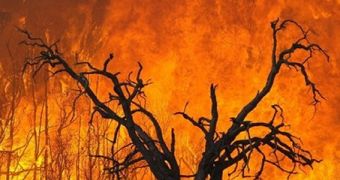Just recently, researchers working with the US Forest Service decided to look into how forests in the Pacific Northwest are responding to environmental changes brought about by global climate change and the ever-increasing number and violence of wildfires.
Thus, they discovered that, whereas up until now, said forests were quite efficient in trapping and storing CO2 emissions, the fact that more and more large vegetation areas are burned down by wildfires means that their carbon storage potential might be severely altered.
More precisely, these natural ecosystems are likely to release as much as a third of this harmful chemical compound they now carefully conceal in their midst.
As reported on Pacific Northwest Research Station's official website, Chrystal Raymond, one of the biologists who took part in this research, explained how, “Forests on both the eastern and western slopes of the Cascade Range will lose carbon stored in live biomass because area burned across the state is expected to increase. Even small increases in area burned can have large consequences for carbon stored in living and dead biomass.”
Therefore, “Changes in fire regimes in a warming climate can limit our potential to use forests in the Pacific Northwest to store additional carbon and to reduce atmospheric carbon dioxide.”
Using data provided by the Forest Inventory and Analysis, specialists predict that most of the forests still standing in this part of the US are bound to soon be affected by massive wildfires.
This means that global CO2 levels might soon go up not because of an industrial boom, but because climate change and extreme temperature responsible for causing and sustaining wildfires are upsetting the natural carbon cycle.
From where we stand, this is troubling news indeed and immediate measures should be taken to improve on forest management and minimize the effects that wildfires have on our natural world's remaining forest areas.

 14 DAY TRIAL //
14 DAY TRIAL //